Professor Arthur Kingsley Porter The ‘Indiana Jones’ of Glenveagh Castle
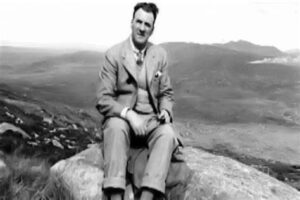
By John Joe McGinley
This is the story of a Yale educated Professor of art, Arthur Kingsley Porter an archaeologist, art historian, and medievalist who has been called a ‘real-life Indiana Jones’. He once owned Glenveagh Castle in County Donegal and is as famous for his mysterious death as for his life’s work.
Glenveagh Castle
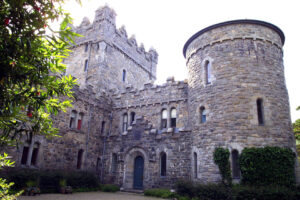
One of Donegal’s most visited tourism sites, Glenveagh Castle, it was built between 1867 and 1873 by the infamous landlord Black Jack Adair and his wife Cornelia.
Its location is spectacular on the shore of Lough Veagh surrounded by lakes glens and the Derryveagh mountain range. Designed in a Scottish Baronial style influenced by Balmoral, it even has its own herd of red deer.
In 1861 Adair evicted 44 families from his land to make way for sheep and commercial deer hunting. The shock and revulsion from those tenants that remained towards the evictions, led to rumours of a curse being placed on Adair and on Glenveagh Castle itself.
The curse was that no owner would ever have children and true or not, the fact is no owner had children from that point forward.
Glenveagh Castle was the seat of John Adair who evicted 44 families from their land in 1861, leading many locals to believe that the Castle had been cursed.
Adair died in 1885 and his wife Cornelia, an altogether kinder human being, inherited the castle. The hospitable Cornelia enjoyed entertaining, and the castle was even home to recuperating Belgian soldiers during the First World War.
After Cornelia Adair’s death in 1921, Glenveagh castle would endure a turbulent few years. During the Irish Civil War, the castle was garrisoned by both Pro and Anti Treaty forces.
Glenveagh was of no real strategic value, but each side craved the symbolism of holding the castle rather than utilising it during the civil war.
After the Civil War, the Castle lay empty until 1929, when just before the world economy collapsed, a Yale educated professor of American art purchased the property. This was Professor Arthur Kingsley Porter an archaeologist, art historian, and medievalist who has been called a ‘real-life Indiana Jones’.
Whilst owning the Glenveagh castle and estate would give anyone an allure of fame, Kingsley Porter would be more infamous for his mysterious disappearance from Innisbofin Island in July 1933.
Did he fall from a cliff in a tragic accident, perhaps he killed himself, was he murdered or had the troubled man faked his own death and created a new life for himself in his beloved mainland Europe? This is his tale.
Born into wealth and privilege
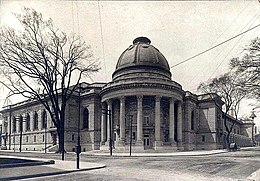
Arthur Kingsley Porter was born in 1883, the third son in a wealthy family in Stamford Connecticut. Tragedy was soon to strike when his mother, Maria Louisa Hoyt died when Porter was only eight years old. His father Timothy Hopkins Porter was a wealthy banker who suffered from regular bouts of depression and paranoia.
When his parents married in 1870 the union merged two of Connecticut’s oldest and most influential families. Both the Hoyts and Porters claimed to have arrived in Connecticut in the early 1600’s.
A young Porter was a classmate of John D Rockefeller Jnr at the prestigious Browning boys school in New York city. Indeed, such was the wealth of the Porter family that an 18-year-old Arthur Kingsley Porter became an instant millionaire when his family trust fund matured. (1)
Arthur Kingsley Porter was born in 1883, the third son in a wealthy family in Stamford Connecticut and was educated at Yale Univeristy
Porter graduated from Yale with a degree in law in 1902, but soon decided that the legal profession was not for him. In 1904 while touring Europe he experienced what he would later describe as a semi spiritual awaking. This happened in France while visiting Cathédrale Notre-Dame de Coutances, a Gothic Roman Catholic cathedral constructed from 1210 to 1274 in the town of Coutances, Normandy. In awe of the architecture and art on display, the 21-year-old Porter, now a wealthy man decided that he would now study Art History. (2)
On his return to America, he enrolled at Columbia University’s School of Architecture.
The Indiana Jones of architecture
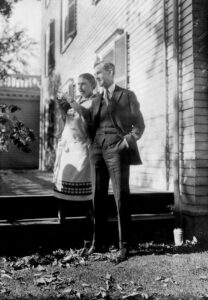
In 1907 Porter now gaining a reputation as a scholar of architecture met Lucy Byrant Wallace, seven years his senior, at a social gathering in New York.
While Porter was a handsome and shy man with a bookish nature Lucy was a force of nature with a confident outlook on life and a busy social life. Oddly suited to some, the couple however shared a passion for art and architecture and quickly fell in love. They married in 1908 and spent the next few years travelling throughout Europe, with Lucy acting as the Porters official photographer documenting his studies.
The couple returned the US as the European continent fell into the horrors of the First World War. As the conflict ravaged France and Belgium destroying much of the architecture, he loved, Porter returned to Yale in 1915 to take up a lecturing role, while he worked towards a Bachelor of Fine Arts.
Arthur Kingsley Porter married Lucy Wallace in 1907.
In January 1916, he proposed giving the University $500,000 to set up a department of art history. Porter laid out the very specific purposes for which the money was to be used.
Yale frustrated by the strict rules laid down by Porter decided to decline the offer. Porter became frustrated at Yale’s lack of openness to having a full department dedicated to the study of the history of art and architecture.
In 1918 Porter left Yale to lead architectural preservation efforts by the French government caused by war damage. He was the only American academic invited to join the commission.
In the wake of the Great War, Porter left Yale to lead architectural preservation efforts of French government’s to document and repair damage to France’s cultural heritage done by the war.
He also became a guest lecturer at universities in France and Spain. His reputation was growing, and he was revolutionising the understanding of the chronology and diffusion of Romanesque sculpture. (3)
In 1925 the couple returned to America where Arthur became the chair of Art history at Harvard University. He was now at the top of his profession, and he became one of the founders of the College Art Association of America, and a prize in his honour is still given out each year.
Porters Wealth and growing reputation have led many to liken him to Indiana Jones. His personal finances allowed him to fund regular leaves of absence and equip his own expeditions to Europe in search of treasures.
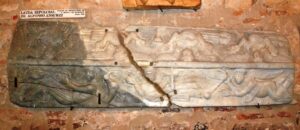
One such adventure involved the discovery of the sarcophagus commissioned by Count Pedro Ansùrez in 1093, for his young son Alfonso.
Porter was looking for evidence to back up his theory on the spread of Romanesque sculpture. He was convinced the sarcophagus proved this and he used his wealth to acquire it and take it back to America where he presented it as a gift to Harvard Universities Fogg Museum, where it was prominently displayed.
Scholars considered the lid of the sarcophagus was one of the finest examples of European sepulchral sculpture in existence from the Middle Ages. The discovery of the burial slab gave Kingsley the proof he had been searching for that Romanesque sculpture was practiced in Spain during the eleventh century.
Kingsley’s work helped to prove that Romanesque sculpture was practiced in Spain during the eleventh century.
The sculptured style of decoration on the coffin lid was a divergence from tomb construction of the time. It contained large figures representing souls that had passed into the other world, Evangelists and Archangels, all in human form. The figures were depicted with large bulging eyes and the archangel Gabriel had long chiselled curls. Therefore, as an art object it was invaluable to archaeologists to further their knowledge of eleventh-century Romanesque Spanish sculpture.(5)
In 1931, Jacobo Fitz-James Stuart, the 17th Duke of Alba, discovered the sarcophagus had been removed from Lèon and brought to Harvard by Porter. Outraged he lobbied the Spanish government, who became involved with the negotiations with Harvard for it’s return, but before any deal was reached, Alfonso XIII of Spain was overthrown by a revolution, and so the slab remained on display in America.
Negotiations resumed in 1933, and Porter consented for the sarcophagus lid to be returned to Léon and It was finally returned to its rightful place on the 8th of July 1933. (6)
Success but dark secrets
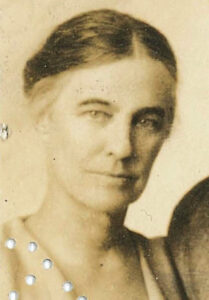
Despite his success porter was concealing a dark secret from his wife. After 17 years of married life Porter confessed to his wife that despite loving her deeply, he was gay.
Lucy Porter decided to stand by her husband, but this confession perhaps explains the scandal that clouded his departure from Harvard in 1929, where rumours persisted of Porter sexually harassing his male students. (7)
Porter like his father before him suffered from bouts of depression and his wife Lucy decided that a move to Ireland would help her husband recover. Porter already had a deep interest in Celtic history and art and the couple decided to purchase a home in Ireland.
Lucy hoped the change of scenery would ease her husbands troubled mind.
After 17 years of married life Porter confessed to his wife that despite loving her deeply, he was gay.
As 1929 drew to a close the couple purchased Glenveagh Castle and the surrounding estate for £5,000.
A recovering Porter now immersed himself in Celtic studies and he became friends with the Irish writer and artist George William Russell, whose paintings still hang on the walls of Glenveagh Castle. (8)
Porter also restored a fisherman’s cottage on Inishboffin Island (Inish Bó Finne in Irish), which is located 3km from Machaire Rabhartaigh (Magheroarty) on the County Donegal coast. It was here that Porter began to learn the Irish language.
However, Porters Irish idyll began to unravel as his depression again began to take hold.
His wife arranged for Porter to see Dr Havelock, an unorthodox psychotherapist and sexologist in London. The Dr believed that Porters repressed sexuality was the cause of his depression.
He recommended that Porter give in to his desires with a young patient of his called Alan Campbell. The bizarre situation took an even stranger twist when Porter’s wife Lucy agreed with the Dr and the young Campbell became a regular visitor to Glenveagh Castle and to the Porter’s American home in Connecticut.
This strange relationship dynamic could not be sustained for long and when all three-set sail for Ireland on May 27th, 1933, Campbell ended the relationship and travelled onto London alone.
Death or disappearance?
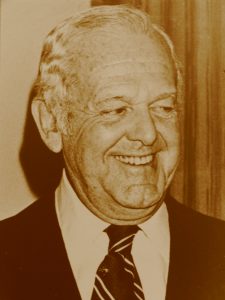
Porter now relapsed into a deep depression. Eleven days later, while spending a night at the fisherman’s hut that he had lovingly restored on Inishboffin, Porter went out walking during a storm and was never seen again.
The inquest held that September, was the first in the short history of the Irish state to be held without a body. During the inquest Porters widow detailed her frantic but futile six-hour search for her husband.
Lucy Porter gave evidence that she believed her husband must have slipped off the cliffs, fallen into the sea and been carried away. It was also recorded that the next day she had told the author George William Russell that: “Kingsley will not return tonight, Kingsley will never return.”
An interesting fact came to light when the inquest was told that one small boat had left the island the morning after Porters disappearance.
Arthur Kingsley Porter disappeared off Inisbofin Island but his body was never found.
The inquest returned a verdict of death by misadventure, though privately the coroner voiced his opinion that Lucy knew more than she said in court. And that she acted as if her husband’s disappearance was not unexpected. (9)
The inquest did not discuss Porters love affair with Alan Campbell , which had ended just before his disappearance.
As for Lucy, she returned to Glenveagh and funded research to study the “nature, cause and treatment of homosexuality”. She also continued Porters archaeological studies.
Lucy sold Glenveagh to Henry McIlhenny a former student of Arthur Kingsley Porter’s from Philadelphia. He had rented the castle each summer from 1933 onwards and in 1937 he purchased it outright. The estate was going to someone who shared Porter’s love of architecture. In fact, McIlhenny had been a student of Porter’s at Harvard.
However. McIlhenny would fall foul of the Glenveagh curse and never sire an heir. In 1975 he sold the estate to the Office of Public Works which allowed the creation of Glenveagh National Park, and in 1983, Glenveagh Castle was bestowed to the nation, with the National Park opening to the public a year later and the castle in 1986. (10)
Did Porter actually die that night?
The story of Arthur Kingsley Porter did not end with his inquest. A few years later, there were rumours of sightings of Porter in Europe, and these continued to be reported from locations all over the world for many years after his disappearance. But despite these stories no concrete evidence was ever found of Arthur Kingsley Porter (11)
His wife lucy returned to America and died on September 19, 1962, at her home in Cambridge, Massachusetts.
We will never know what happened to Arthur Kingsley Porter as his body was never found. Perhaps he died on Inishboffin, or had he faked it all to leave Northwest Donegal behind to live the life he always wanted to experience in Europe?
We shall never know.
There are some who perhaps of Porters slight similarity with Indiana Jones believe in a more supernatural reason for his disappearance.
That is linked to his disturbance of the tomb of the young Alfonso.at Sahagún in 1926. Could a medieval curse have been unleashed?
Perhaps a flight of fancy, but one interesting fact that is true, is that the sarcophagus lid that had enclosed the tomb of Alfonso Ansúrez in 1093 was finally returned to its rightful place on 8th July 1933 – the day of Porters disappearance!
If you enjoy the Irish Story and wish to support our work, please considering contributing at our Patreon page here.
Sources:
- Lucy Costigan, Glenveagh Mystery: The Life, Work and Disappearance of Arthur Kingsley Porter. 2012 Newbridge: Merrion.
- Linda Seidel “The Scholar and the Studio: A. Kingsley Port and the Study of Medieval Architecture in the Decade Before the War” 1990
- Linda Seidel “The Scholar and the Studio: A. Kingsley Port and the Study of Medieval Architecture in the Decade Before the War” 1990
- Lucy Costigan, Glenveagh Mystery: The Life, Work and Disappearance of Arthur Kingsley Porter. 2012 Newbridge: Merrion.
- Official Register of Harvard University Containing Report of the President of Harvard College and Reports of Departments for 1932, 1933, 31, 3. 5 February 1934. p. 309.
- “Collections and Critiques | News | The Harvard Crimson”. thecrimson.com. 12 December 1935.
- Lucy Costigan, Glenveagh Mystery: The Life, Work and Disappearance of Arthur Kingsley Porter. 2012 Newbridge: Merrion.
- “Glenveagh Castle – Cruelty, Cowboys and Celebrities”. Daily Scribbling. 15 June 2014.
- Lucy Costigan, Glenveagh Mystery: The Life, Work and Disappearance of Arthur
- Castle History – Glenveagh National Park
- Lucy Costigan, Glenveagh Mystery: The Life, Work and Disappearance of Arthur